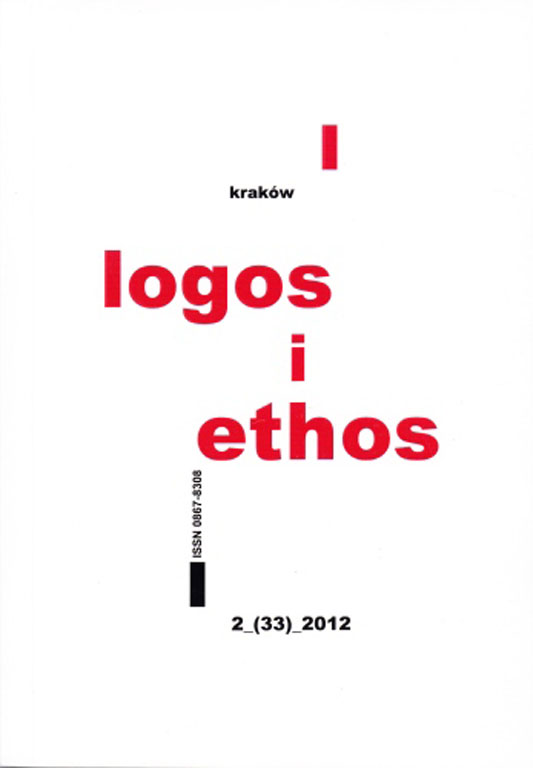The Real Beauty as Spirit of Facts. The World by A. F. Losev
DOI:
https://doi.org/10.15633/lie.181Abstrakt
A. F. Losev is one of the latest authors, whose thought belongs to what is commonly called the Russian Silver Age. Inspired by V. Solv’ev’s theories, platonic and neoplatonic philosophies and the Orthodox Christianity, he gave to the world one of the most complex and full fusion of the Occidental and the Oriental ways of thinking. An undeniable debt he has with Plato, Plotinus, Dionysius, Nicholas of Cusa, but also with Hegel, Schelling, Husserl and other European classics, must be approached to his onomatodox observance and to a completely autonomous thought he creates using these precious sources.
The concept of beauty is one of the intrinsic elements of his ontological theory. Losev describes the world as a revelation of the First Principle that, gradually, becomes concrete, installing by itself what we call facts. This all-encompassing Father of the whole existence is both hidden and present at every moment of the world’s life. The essay The real beauty as spirit of facts. The world by A. F. Losev analysis the essence of beauty as presented by A. F. Losev, starting from the structure of his dialectics.
The dialectical method, as it is used by this great Russian philosopher, shows the connection between the logical-ontological elements that compose the universe and the human thought about it. As the First Principle becomes single things (or facts, as Losev call it) the beauty becomes a sign of its presence in each of fact, as it reveals a simple presence of the life in the world. Indeed, the First Principle, that is God, is the only real source of life and beauty reflects the presence of the Holy Spirit that keeps and furthers the life on the Earth. This is why, as to Losev, Beauty is a mirror of Sanctity and Love.
Aesthetics is one of the most important parts of Losev’s theory that cannot be properly called “system”. His Dialectics of the Artistic Form (1927) begins with the presentation of the main categories of thought showing the big role that the forms, reminding the Plato’s inspirations, play in his aesthetical theory. These perfectly delineated and living shapes of being (which root is formless and unknowable) can be caught and expressed by the arts. The Beauty can be seen where the archetype is captured in the hand-created types. His masterpiece Dialectics of myth gives the most complete picture of Losev’s theory of beauty so that this work is the real heart of this essay.
The real life showing and glorifying its own Principle and His Spirit, that is the real Beauty for Losev.
Pobrania
Opublikowane
Numer
Dział
Licencja
Prawa autorskie (c) 2012 Janna Voskresenskaia

Utwór dostępny jest na licencji Creative Commons Uznanie autorstwa 4.0 Międzynarodowe.
W kwestii praw autorskich obowiązują następujące zasady:
1. Twórca oświadcza, że służą mu prawa autorskie do utworu i że nie są ograniczone w zakresie objętym niniejszym oświadczeniem oraz że utwór jest dziełem oryginalnym i nie narusza praw autorskich innych osób.
2. Twórca zezwala Uniwersytetowi Papieskiemu Jana Pawła II w Krakowie na nieodpłatne, niewyłączne i nieograniczone w czasie korzystanie z utworu, to jest:
- utrwalanie i zwielokrotnianie: wytwarzanie egzemplarzy utworu techniką drukarską, reprograficzną, zapisu magnetycznego oraz techniką cyfrową;
- obrotu oryginałem albo egzemplarzami, na których utwór utrwalono (wprowadzanie do obrotu, użyczenie lub najem oryginału albo egzemplarzy, publiczne wystawienie, wyświetlenie, a także publiczne udostępnianie utworu w taki sposób, aby każdy mógł mieć do niego dostęp w miejscu i w czasie przez siebie wybranym);
- włączenie utworu w skład utworu zbiorowego;
- udzielanie przez Uniwersytet Papieski Jana Pawła II w Krakowie sublicencji Creative Commons Uznanie autorstwa 4.0 Międzynarodowe (CC BY 4.0)
3. Uniwersytet Papieski Jana Pawła II w Krakowie udostępnia utwór na Platformie Czasopism należącej do uczelni, na licencji Creative Commons Uznanie autorstwa 4.0 Międzynarodowe (CC BY 4.0). Tym samym uprawnia wszystkich zainteresowanych do korzystania z utworu pod następującymi warunkami:
- zostanie podany autor i tytuł utworu,
- zostanie podane miejsce publikacji (tytuł czasopisma i adres internetowy do oryginalnie opublikowanego utworu).

